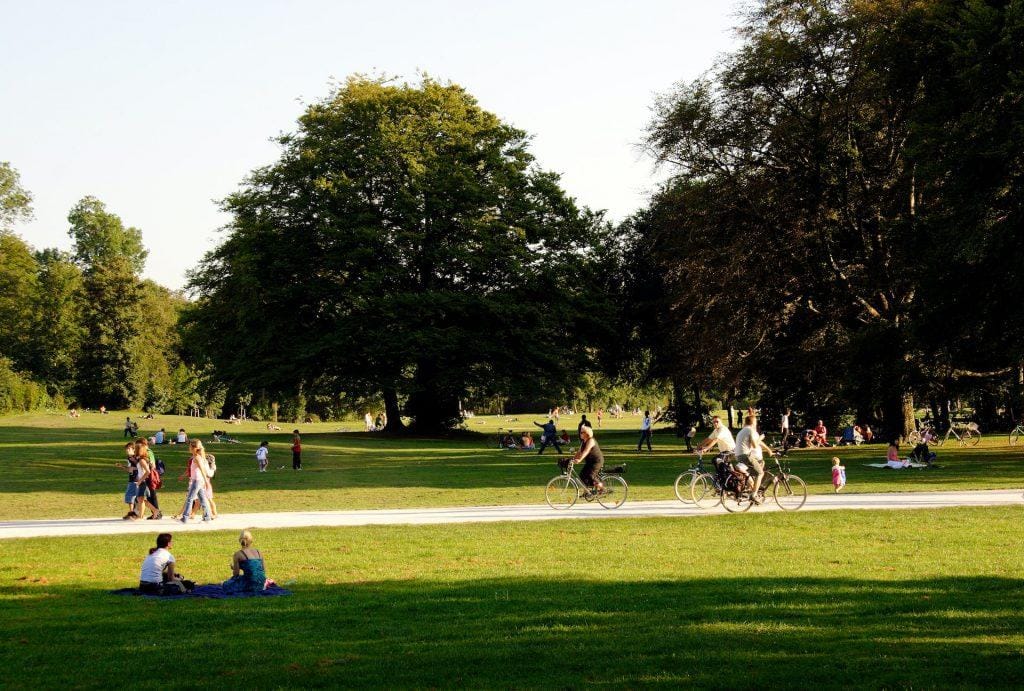
We face some of our most significant challenges right now because of climate change and environmental issues. Envision a world in which every nation and its people are concerned about the impact of their actions and behaviors on the environment. That’s why they’re looking for ways to lessen their influence wherever possible. If we could do this, we could ensure that future generations can continue calling Earth home. Increasing your public transportation usage can help reduce your carbon footprint and aid in the fight against climate change. Why not save time, money, and gas by taking public transportation or walking shorter distances within the city rather than driving? Here are the environmental benefits of sustainable transportation.
What is sustainable transportation?
So, how do we define environmentally friendly transportation? Sustainable transportation, as the term implies, refers to any form of environmentally friendly transportation that produces minimal waste. However, it’s more than that. It’s also about balancing our current and future needs. Sustainable modes of transportation include walking, bicycling, taking public transit, carpooling, carsharing, and driving a hybrid or electric vehicles. The transportation problem at large is a sustainability problem since it affects so many people and has enormous effects on the environment and the climate.
Working people may be more likely to choose environmentally friendly commute options if they are aware of their various advantages. Sustainable transportation positively affects people’s health, the environment, local economies, and disposable income. As the number of users grows, the systems will be able to expand and have a bigger effect.
It makes the air healthier
The average amount of carbon dioxide gas a vehicle releases each mile driven is one pound. Using public transit rather than driving a car decreases carbon dioxide emissions by 45 percent, reducing other air pollutants and improving air quality. Estimates range from 6 million to 14 million metric tons of CO2 saved yearly by increased bicycle use in the United States, with public transit saving the most.
Using more eco-friendly modes of transportation helps individuals breathe easier. Particles released from exhaust gases can lodge deep into the lungs and heart, causing severe health problems. Most Americans (over 92%) are exposed to unhealthy levels of air pollution. More people using public transportation would reduce pollution significantly, benefiting their health and extending their lives.
As the pros at Fairfax Transfer and Storage know well from working in the field, sustainability in transportation also has positive effects on human health. Walking and riding a bike are excellent methods to exercise and keep a healthy lifestyle.

Saves energy
A decrease in traffic congestion has the added benefit of reducing energy use. Cars caught in traffic waste fuel and increase pollution levels due to their frequent starts and stops. Energy consumption is lower per passenger when taking public transportation rather than driving oneself. Taking use of public transport, or even just walking or riding a bike, may help reduce carbon emissions. This is extremely important in today’s day and age.
More room for green spaces
At some point, cities will simply be unable to accommodate a greater number of automobiles since there will just not be enough room for both people and their cars. Let’s face it; vehicles take up a lot of space. Try to picture fitting 20 passengers in a vehicle instead of fitting them all onto a single bus. This is also one of the main challenges of long-distance relocations. In fact, some of the biggest difficulties come from congested roads. Congestion is rising due to a city’s inability to accommodate the growing number of cars. Parking is also a huge problem. With fewer cars, there will be less need for parking spots. In turn, this will allow for more green spaces like parks and walking zones. This could be one of sustainable transportation’s most significant environmental benefits, as more green spaces will lead to a better environment.

Conserves land
Sustainable transportation promotes compact growth, which shortens commutes. Cities may have more paved areas, while the suburbs and rural regions outside of cities have fewer. This frees up space that may be used for greener purposes, including parks and farms. When there are fewer roads in rural regions, less water is diverted from the ground, which is good for the environment and the wildlife that calls such areas home.
Saves money
In the early phases of growth, investing in sustainable transit may be costly due to the need to build roads, purchase buses, and establish the appropriate infrastructure for transportation networks. However, the payoff regarding financial and time savings is usually worthwhile. Public transit system upkeep is also less expensive than road upkeep. Additionally, cities can spend more money developing sustainable areas rather than wasting it on unsustainable roads.

What to do?
Changing the culture of a city is difficult. Therefore we need to find ways to inspire and motivate residents. Before people contemplate giving up their cars in favor of buses and trains, we need to provide them with reliable, high-quality public transportation that is affordable for everybody. Punishing people, as history has shown, usually doesn’t go well. But making automobile travel less appealing, more expensive, slower, and difficult might work.
Altering urban design concepts is also necessary to lessen the number of automobiles on the road and the damage they cause. Creating a pleasant driving experience is no longer a top goal when designing suburban roadways and urban places. If cars are necessary, the focus should be shifted to electric vehicles. These are much less damaging to nature.
One cannot and should not meddle with other people’s freedom of choice in a democratic society. Nonetheless, it is possible to guide individuals. The success of our efforts to save the planet and the lives of future generations depends on how well we cater to the wants and requirements of the people who use public transportation or rely on it, as well as those who walk their commutes.
Final words
Now you know about the environmental benefits of sustainable transportation. It should be a common goal for all of us to aim towards. Environmentally friendly modes of transportation are on the rise because of their many benefits, including reduced pollution, cost savings, and traffic relief on congested highways.
Unlike other transportation companies, ecoShuttle was founded on sustainability and keep our beautiful planet as green as possible. Our scenic tours include field trips, wine tastings, and trips to the mountain. Are you ready to share the gift of nature with your friends, family, or coworkers? Give us a call and we will take care of the rest! Alternatively, get a quote on our website and we will follow-up on your inquiry.


